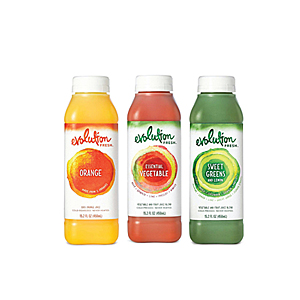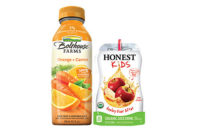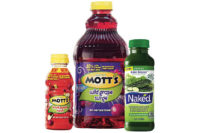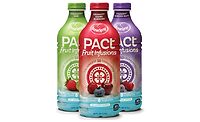One of the top reasons shoppers buy JUICES is for their better-for-you attributes, Sarah Theodore, global drinks analyst at Mintel, Chicago, told Beverage Industry in January. For instance, many juice brands feature no-sugar-added claims or are fortified with vitamins and minerals, she noted. Almost half of U.S. consumers who buy 100 percent juices look for no-sugar-added varieties, according to Mintel’s January 2011 “Juice and Juice Drinks” report. And, 40 percent of people who buy 100 percent juices look for vitamin- or nutrient-enhanced formulations.
in January. For instance, many juice brands feature no-sugar-added claims or are fortified with vitamins and minerals, she noted. Almost half of U.S. consumers who buy 100 percent juices look for no-sugar-added varieties, according to Mintel’s January 2011 “Juice and Juice Drinks” report. And, 40 percent of people who buy 100 percent juices look for vitamin- or nutrient-enhanced formulations.
Last fall, The Coca-Cola Co., Atlanta, launched a new line of orange juices under the brand name Minute Maid Pure Squeezed. The line is available in four varieties: No Pulp 100 percent Orange Juice, No Pulp 100 percent Orange Juice with Calcium and Vitamin D, Some Pulp 100 percent Orange Juice, and Light Orange Juice Beverage with Calcium and Vitamin D.
Three-fifths of all juice and juice drink buyers look for low price when shopping, which suggests that any price increases from manufacturers might cause consumers to move away from a particular brand, according to Mintel’s juice report. To reduce shoppers’ focus on price, the report advised juice and juice drink manufacturers to communicate their brand’s value proposition and special characteristics, such as a functional aspect, drinking experience or unique flavor.
Looking to reinvent the super-premium juice segment, Starbucks Coffee Co., Seattle, recently acquired Evolution Fresh Inc., which offers “never heated” juice products. Evolution Fresh’s high-pressure pasteurization technique ensures that the inherent nutrients are kept intact during the juicing process, said Jimmy Rosenberg, founder and chief juice officer of Evolution Fresh Inc., in a statement. Starbucks is working to expand the brand’s distribution and offers its juices in Starbucks stores. It also introduced a new health and wellness retail concept that will further redefine the super-premium juice category and experience for consumers, the company said.
From 2008 to 2010, consumption of juice and juice drinks has remained the same in U.S. households, according to Mintel’s juice report. Consumption of orange juice, however, decreased significantly from 2006 to 2010. To increase juice consumption, the market research firm recommended positioning juices as a healthy alternative to sports drinks, or creating crossover products, such as fruit juice-based energy drinks and fruit juice-based teas.
Additional growth areas for juice include new segments such as aloe vera beverages and coconut water. Mintel’s Theodore said in Beverage Industry’s January issue that the number of juice introductions containing aloe vera as a flavor component has almost doubled since 2010. Combining the two trends, San Francisco-based SPI West Port Inc. launched Alō Coco Exposed, which blends aloe with coconut water and other juices. In addition, Vita Coco, based in New York City, launched Vita Coco Tropical Fruit last summer, which combines coconut water and pink guava, orange, red dragon fruit and pineapple juices.
Turning to coconut water as a calorie-cutter, The Coca-Cola Co. subsidiary Odwalla launched a line of Smoothie Refreshers that are formulated with coconut water for a light texture and reduced calories. The line is available in Mango Lime Twist, Mixed Berry Shuffle and Pear Berry Jive varieties, one serving of which contains 150 calories. BI






